Postmodern design: Grace Jones maternity dress by Jean-Paul Goude
Pomo summer: art director Jean-Paul Goude brought Postmodernism's bold shapes and historical references into the fashion world with his maternity dress for Grace Jones, which both disguised and celebrated her pregnancy.
In the next instalment from our season, we explore the genesis of the dress and how it made Jones a poster child for the design movement everyone loves to hate.
Goude provided styling and art direction for Jones during the 1970s and 1980s. Although they were long-term collaborators professionally, the two also developed a personal relationship and the Jamaican model-turned-popstar became pregnant with his baby in 1979.
"I wasn't ready to be a parent and to have that responsibility, but Grace wanted to keep the baby so we did," Goude told Dezeen. "We stayed together and I softened up."
Goude and Puerto Rican fashion designer Antonio Lopez created a range of Constructivist maternity clothes for the pregnant Jones to wear during gigs and performances, including an avant-garde outfit that later became linked to the Postmodern movement.
Born in Paris in 1940, Goude studied at the Ecole Nationale Superieure des Arts Decoratifs in Paris before embarking on a career as an illustrator.
After art directing the 75th issue of Esquire Magazine in 1968, then-editor Harold Hayes asked him to be the publication's full-time art editor, so Goude upped sticks and moved to New York.
It was there that he met Jones amid the city's disco scene in the late 1970s, when Postmodernism was also approaching full swing.
"People were still doing lots of drugs and I had been working so hard for so long and she made me part of her lifestyle, made me go out dancing at Studio 54," Goude said in an interview with WWD. "She became an obsession and we did everything together."
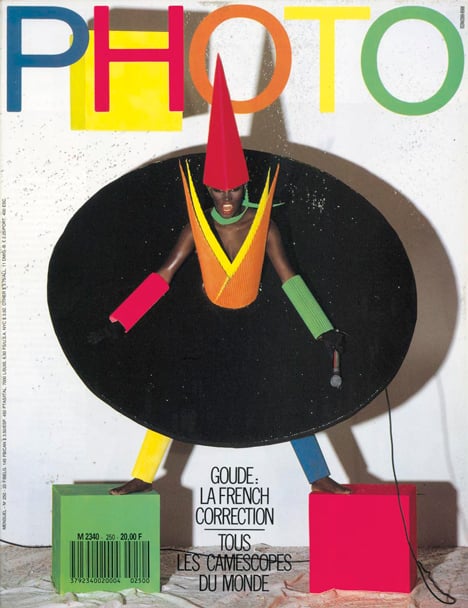
He began providing consultation on her styling and art direction, as well as stage-managing her shows and creating her album artwork using his own photographs. Each of these elements were used to demonstrate and exaggerate her reputation for being a wild performer – one that she stills upholds.
After announcing her pregnancy, Jones still had to perform shows in order to earn money and keep up her career's growing momentum. But according to Goude, nightclubs were reluctant to book expecting mothers.
"We didn't want anyone to know that she was pregnant," said Goude. To solve this, he worked closely with his friend and collaborator Lopez to create a line of maternity clothes that would disguise her bump using angular shapes and bright colours.
As an initial reference, the pair used their fascination with the colours and shapes of designs from the early 20th-century Bauhaus art school in Germany. Borrowing from previous styles was one of the defining features that connected the work of architects and designers within the Postmodern movement, but Goude's approach was all about visual effect.
Although most of the clothes were designed to conceal the baby bump, the most iconic of the maternity outfits was worn to celebrate the pregnancy. A baby shower for Jones was held at 4am in a New York nightclub, to which she turned up in what is now known simply as the "Grace Jones maternity dress".
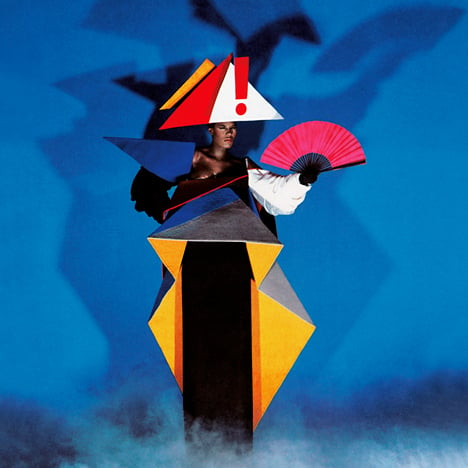
The ensemble was built using cardboard sheets, which formed angled sections around her protruding stomach. Bright yellow fabric lined the inside of the shapes, with grey and blue material covering the outside – both serving to distract from the bulge concealed by a vertical black panel underneath.
But it didn't stop there. A huge triangular blue form capped the shoulder of a billowing black sleeve on the right arm, while a similar sleeve in white covered the left. She also wore a triangular red, yellow and white hat decorated with a stuck-on exclamation mark.
A particular photograph of Jones wearing the dress, in which she is shown winking and holding a pink fan, has since become an iconic image of both her and the Postmodern movement. It was used as the poster image for the V&A museum's Postmodernism: Style & Subversion 1970-1990 exhibition in 2011.
Goude and Jones continued to work together after their son, Paulo, was born in November 1979 – and Goude's artworks became just as iconic as Jones' music.
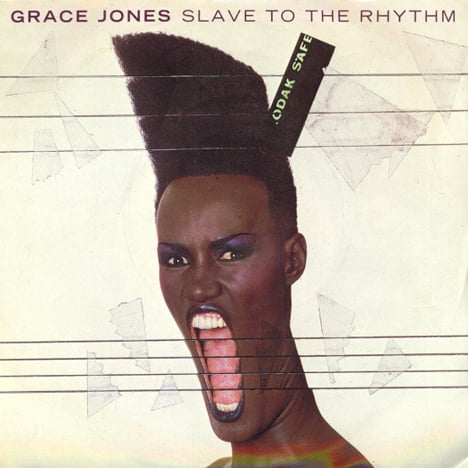
For the cover of 1985 album Slave to the Rhythm, a Polaroid image of Jones' face was cut-up and repeated in a way that extended and distorted her open mouth and angular buzzed haircut. Goude has previsouly described Jones as "beautiful and grotesque at the same time".
"She has such an interesting face," he told Dezeen. "The angles and her hair – there was something about her."
Another album sleeve, this time for Island Life released in the same year, shows her statuesque figure wearing nothing but two red fabric tubes covering her breasts and one knee.
She stands in profile on one leg, with one arm reaching back for her second leg and the other extended forward with a microphone in hand.
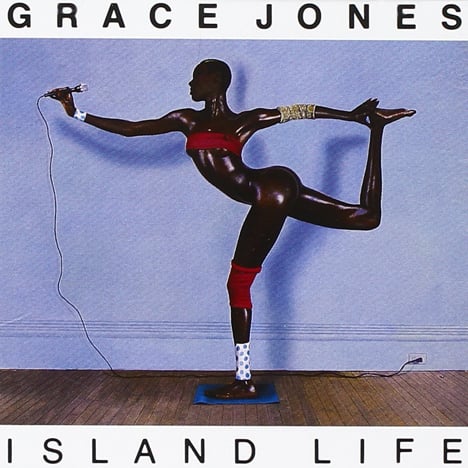
The impossible pose was again created by collaging sections of different photos, a technique that seems to have developed from the cutting and pasting of shapes that Goude used to form the maternity dress.
Goude and Jones eventually severed their romantic ties, but maintain their professional relationship to this day. Goude still owns the maternity outfit as part of his private collection.
His styling helped to elevate Jones to global success and cement her reputation as one of the most original artists of the 20th century. In a recently published memoir, Jones slammed current singers including Rihanna, Lady Gaga, Beyoncé and Miley Cyrus, who she claimed have all copied her.
"I have been so copied by those people who have made fortunes, people assume I am that rich," she said.
"But I did things for the excitement, the dare, the fact that it was new, not for the money, and too many times I was the first, not the beneficiary."
Now in his seventies, Goude continues to produce high-impact imagery, with recent work including adverts for Paris department store Galeries Lafayette, a campaign for fashion brand Kenzo and a series of covers for Paper Magazine's Winter 2014 issue.
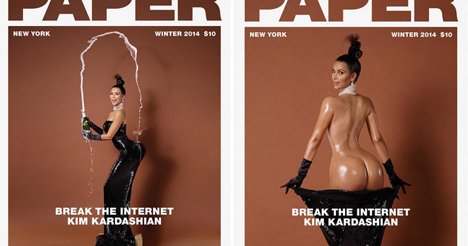
One of the Paper covers shows a photograph of Kim Kardashian's nude bottom, while in another the reality TV star has a champagne glass balanced on her rear and liquid appears to tumble into it from a bottle in her hand. Both were accompanied by the text "Break the internet" – and became a viral sensation. "She has the strangest body," said Goude, who added that it was hard to compare Kardashian to Jones.
Without the help of the internet and social media, the maternity dress didn't receive quite so much attention at the time. However, the design demonstrates how Postmodernism extended past the boundaries of architecture and design, crossing disciplines to reach different corners of the creative world. Goude's dress encompassed art, graphics, music and fashion – nothing was safe.